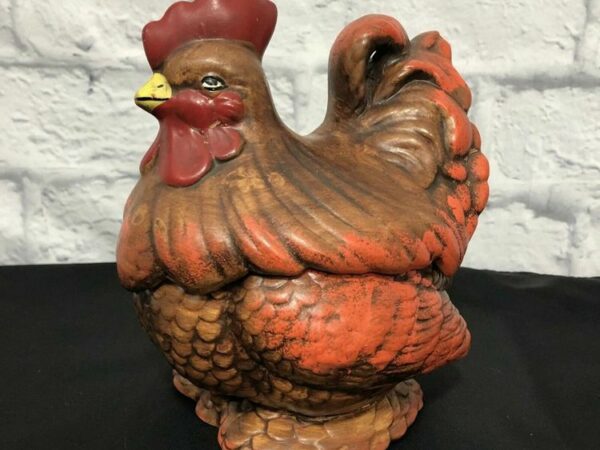Ever wondered if jewelry boxes had any value? Given that most of them were mere presentation boxes that only contained or displayed the jewelry in them.
You should know that they do. These treasure boxes can fetch lots of money, just like any other in-demand antique products. As their value depends on several factors popular among jewelry box collectors in today’s market. Such as rarity, type, style, function, and one special factor such as age (pre-industrial or post-industrial).
In this post, we’re going to discuss all these factors that give your antique jewelry box its value. And touch on how to value them. In turn, there will be a comprehensive section on how to identify them. Along with a roundup of priced antique jewelry boxes, you can get your hands on them now.
By the end of this post, you should be well informed enough to tackle the antique jewelry box market.
Table of Contents
The History of Antique Jewelry Box
- Jewelry boxes could date back as far as the stone age, which was the time effective cutting tools were invented and then probably used to make jewelry. Users of such important pieces during this Era considered keeping them safe from being stolen or lost. And they probably did this by storing them in a special container or “jewelry box”.
- Then later on around 5000 BC during the prime of Ancient Egypt, prominent people or royalty were known to adorn themselves with jewelry. Even the commoners possessed gold pieces of jewelry with gems on them. So containers such as jewelry boxes were quite common. The only difference was how well decorated the boxes were. As some of them could be made out of wood with some patterns designed on them. While others are probably made of metal with special patterns or gems fixed in them.
- Another timeline to consider is during the reign of the Roman Empire. Where jewelry was a sign of status in the government or rank in the army. For instance, generals or any other significant rank in the army had mandatory jewelry to wear. These are usually with a specific jewelry box. The same can be said about brooches which are used to hold the senator’s clothes while taking part in a meeting.
- During the Victorian Era wearing, jewelry was a privilege that only members of a royal family would enjoy. Or women who were admired by royalty for their beauty. So it was a rare luxury during this period of human history.
- Until the industrial era, products were produced at a higher frequency than ever before with automated manufacturing machines. Such as effective jewelry cutting machines that can mass-produce loads of jewelry units in a short time. The high supply of these pieces of jewelry enabled the middle class to afford them.
- In turn, loads of jewelry boxes were also mass-produced. And they reduced in size over time. From large jewelry boxes (treasure chest size) to little ones which are also known as trinkets. These trinkets were quite popular amongst the middle class because they were able to house the very few pieces of jewelry they possessed comfortably.
- By the 20th century, novelty jewelry boxes became popular. As homeowners leaned towards a Victorian sense of style when it comes to designing their immediate environment (like the sitting room) during this time. So, instead of the plain treasure boxes chest designed with gemstones and patterns. There were jewelry boxes that had the structure of a statue or any unique figure.
Types Of Antique And Vintage Jewelry Boxes
There are three ways to classify antique and vintage jewelry boxes. Either through the material type from which they’re made, the design (style), or their functions. Read on as we’ve listed several types for each category of antique jewelry boxes:
Types Of Materials Antique And Vintage Jewelry Boxes (or style):
Victorian style jewelry boxes
This style of jewelry box was quite popular from the mid-19th century down to the early 20th century. Their jewelry boxes were ornate and made out of materials that were not common in earlier times. For instance, it’s almost common to find glass ornate jewelry boxes from the Victorian Era. This is because its design aims to beautify the immediate surroundings instead of just storing and hiding your jewelry pieces. As you can tell from the fact such jewelry boxes can be easily damaged from impact.
Metallic Art Jewelry Boxes
These types of vintages or antique jewelry boxes were quite popular during the early 1900s. Their physical design consists totally of metal parts. From the top cover down to the hinges on the sides. Sometimes you could find such jewelry boxes made with a single metal material all through. You can also find all metal art jewelry boxes consisting of parts made out of different metals.
The most common types of metals used to make antique jewelry boxes in the early 1900s were metals that could withstand wear and tear. They include electroplated gold, silver, a zinc-based alloy, Copper, and ivory enamel.
These types of antique jewelry boxes were mostly Mass produced. But they still can get you a lot of money in today’s market. Because it’s quite rare for such boxes to last through the years without rusting or breaking down slowly. Apart from the common metal jewelry boxes that survive time, you can also find valuable jewelry boxes that are custom made by artists such as Limoges and Faberge.
Art Deco Styled Boxes
Art deco style consists of a sleeker design compared to older boxes. Its design was quite popular. From the late 19th century to mid 20th century, minimalist design was sought after. Apart from their sleekness, they are also covered with geometric designs to complement their simplistic appearance.
Such boxes were popularly made of materials such as bakelite, lacquered wood, lucite, and even frosted glass. The most popular brands to fish for are Cartier and Lalique. As they were quite prominent manufacturers throughout art deco’s reign in the 19th and 20th centuries.
Tramp Art Boxes
These types of jewelry boxes are made from everyday items. Like the wooden cigar box. Such jewelry boxes are usually embellished with obscure items like pebbles, seashells (or any kind of shells), nails, screws, or even glass. They were easy to make and were great alternatives to luxury jewelry boxes from the late 1800s down to World War II (1945).
Today, there are many collectors of antiques that find value in these types of boxes. Even though they may seem quite primitive. Collectors of such pieces look at two factors when valuing them. They include:
Intricacy – the level of detailing that was done on the piece
Delicacy – the fitness of its texture
Commemorative Boxes
Another type of jewelry box to look out for is commemorative boxes. These masterpieces are the ones with designs or motifs that depict a special event such as an important celebration of sorts or historical event. At the time these pieces were distributed or sold for less not far from their manufacturing date. Only to be forgotten in the attic, pile of junk, or thrown away by the original owners.
Today commemorative jewelry boxes are in high demand among jewelry box collectors. As they’re the most likely to be rare.
Plastic vintage jewelry box
This type of jewelry box was made in the early 1900s and was quite popular among the Middle class. Because they were a lot lighter and more impact-proof than older types of jewelry boxes. The most common kind of plastic jewelry boxes you can sell comfortably in the antique market today are celluloid and lucite. As celluloid is an older type of plastic that offers evidence of antiquity.
Other types of antique jewelry boxes
Deep into the industrial era, automation of jewelry box production had already been achieved. This enabled anyone to easily start a venture of making jewelry boxes for the nearest market. As long as viable materials such as ivory, bone, leather, tortoiseshell, bakelite, incolay, Alabaster, and wood are available nearby.
Art Deco is well-known for making jewelry boxes out of different materials. It’s also the one most sought-after manufacturer among your fellow collectors. And it would be a great investment if you wish to make quick gains from jewelry boxes made from unconventional materials.
Types Of Antique And Vintage Jewelry Boxes By Function
Here are types of antique and vintage jewelry boxes based on their function:
Ring boxes
These are jewelry boxes specifically designed to keep your ring or ring collection safe. They come in various styles. Some can hold just one ring or a pair (for a couple) while others are designed to hold collections of rings.
Such ring boxes consist of rows with loads of slots to fix a ring onto. There can be up to 5 or 6 rows or even more in a box. And as the capacity of the ring box increases, its shape becomes narrower. Which enables them to be better shock absorbers for impact. To prevent the rings from cracking, denting, or even getting scratches.
Apart from sudden impact, there are antique ring boxes designed to help polish your rings upon inserting them into the box’s slot.
Note: other types of necklace boxes such as bracelets and cufflinks work the same way ring boxes work. The most obvious similarity is that they all hold the jewelry in pairs.
Earring boxes
They work the same way ring boxes work. The only difference is that they usually house jewelry in pairs given that there can only be two earrings for a complete set. Upon each is fixed onto extensions or cardboard cutouts that’ll hold the earrings in place.
Sometimes these vintage earring boxes could be designed to hold up to 10 pairs of earrings. Such earring boxes possess lots of hooks that will hold your earrings in place. Others even come with a design that consists of several separated mini square boxes in the whole earring box.
Necklace boxes
Necklace boxes consist of a completely different set up which involves hooks along with a bump at the center. As though it’s a tray. This feature enables your Necklace to be in a fixed position either vertically or horizontally. It also keeps your necklaces from getting mixed up with other necklaces from your collection.
Necklace boxes that can hold 5 to 10 necklaces possess the same feature as a single necklace box. Which is a tray. Such necklaces boxes possess many trays. This is the reason why necklace boxes tend to be bulky and heavier.
Watch boxes
The design of a watch presentation box is meant to keep it or your whole collection from severe damage from impact. Such as scratches or cracks on the glass screen of the watch or its metal body. This is why the interior of such boxes consists of firm hinges that will hold the watch or watches upright.
Identifying Antique and Vintage Jewelry Box
Here are various ways to identify your antique jewelry box:
Maker’s Mark
Viewing the maker’s mark of your jewelry box enables you to obtain various information about your antique pieces such as their age and maker.
What does the maker’s mark look like? The mark is usually a brass plate embossed with information such as when the box was manufactured, where it was manufactured, and the manufacturer of the jewelry box.
There are other styles or methods in which these boxes were marked. Some of them can also be embossed on jewelry boxes made with materials such as leather and velvet. But in wooden and ivory plaques they are engraved. While paper tags are printed on.
Age
You can tell the age of your antique jewelry presentation box by examining the maker’s mark. As they usually contain information on when the box was made. However, you can’t do the same for some antique jewelry boxes for certain reasons such as a botched maker’s mark or the antique happens to be custom-made with no signatures or signs.
Thankfully you can resort to observing the features of your box to get a good idea of the era it was made. For instance, if the piece is an all-metal artwork without a maker’s mark then it’s probably from the Victorian era. Or if the piece is made of bakelite with a botched maker’s mark area then it’s probably from the mid-century era.
Is It Vintage?
Antique jewelry boxes aren’t the same as vintage boxes. The difference is the age. As antique jewelry boxes were made at least 100 years ago. Vintage however is made a mid-century or at least 20 years away.
Design
You can also identify an antique or vintage jewelry box from its design. Which could be from the structure of the box and its engraved or printed patterns. For Instance, in the Victorian era, metallic jewelry boxes were a luxury. Especially with its intricate patterns of florals and animals. Or a box built out with the structure of a statue. Such pieces were popular in the late 1800s.
Popular Manufacturers Antique And Vintage Jewelry Boxes
- Art deco
- Art Nouveau
- Richard Bitterman
- LeCoultre Vacheron & Constant
- Cartier
- Lorie
Assessing Antique and Vintage Jewelry Box Value
Here are several ways to value your vintage or antique jewelry box:
Perform Rigorous Research
Before you try out other methods, the best step to take first is to find out information on your antique piece yourself. For it is the cheapest method you can adopt. How can you adopt this method? All you have to do is observe the antique product in hand. So that you can Find out its age via the maker’s mark and its physical qualities (such as its design) to compare it with historical items.
A great way to approach this is by image searching the antique jewelry box. It should guide you to appraiser sites that might have information on the piece you’re researching. Or you could simply visit various antique jewelry box forums which could offer you access to collectors that can offer you advice on the history and value of the antique jewelry box in question.
Hire An Appraiser
To get an accurate valuation of your antique jewelry presentation box you have to hire an expert. Especially if he or she specializes in valuing jewelry boxes. How do they go about this? They’d probably have a list of factors that are very effective at valuing your antique jewelry box.
Condition
Like most antique products, you can’t sell for the best prices if your piece is not completely intact or it lacks several parts. When negotiating with a fellow collector you automatically lose the pricing power and a third-party appraiser may have to be involved before your scheduled negotiation meeting.
Rarity
Another great way to assess the value of your antique jewelry presentation box is to confirm its rarity. Is it different from what’s in the market? How unique is its design? For instance, there are jewelry presentation boxes that are built to play tunes once the top lid has been opened. Or a fully intact antique all-metal art jewelry box would fetch a hefty price because they’re not expected to last for so long.
Also, If your antique jewelry presentation box happens to be in short supply then it can attract a lot of value. For instance, certain types of antique jewelry boxes were made in short supply. Like commemorative jewelry boxes — which are promotional jewelry boxes for a major event.
Provenance
If the antique jewelry box in hand happens to be previously owned by a prominent person then its value could reach higher. But there has to be solid proof that it was owned by the royal figure in question.
Top 5 Vintage Jewelry Presentation Boxes
Egyptian Handmade jewelry box
Here’s an Egyptian handmade jewelry box that is covered with well-detailed patterns and painted over with attractive pastel colors. Its structure is the basic rectangular chest.
Price $(1000 – 1500)
Rare Antique Imperial Russian Faberge Era Gilt Silver Jewelry Box-FEODOR LORIE
This is a rare pure silver mini jewelry box or trinket from the Faberge era. It’s painted gold with a logo engraved on its top lid. The inside is lined with velvet which is also gold in color.
Price $(2000 – 2500)
Faberge Large Enameled Elephant Figurine – Swarovski Crystal Jewelry Trinket Box
Unlike the regular boxed jewelry trinkets, this is a structure imitating an elephant. And its overall build is quite attractive due to its body being covered with Swarovski crystal. It also has a clever mini-compartment in its back where you can keep small jewelry pieces.
Price $(150 – 200)
Hand-painted jewelry box, jewelry box vintage camel bone Indian home decorative
This is a hand-painted antique jewelry box that consists mainly of wood and camel bone. The interior is completely wooden and there are up to 9 compartment ls for your various jewelry pieces
Price $(3000)
Vintage Smythson Black Leather Jewelry, Cufflinks, Watch Box
Here’s a large leather-coated wooden jewelry box that has up to 23 compartments. Best used for your watches, rings, and Cufflinks.
Price $(1500)
Where To Buy antique and Vintage Jewelry Presentation Box
You can purchase them only from reputable stores that are known for selling antique products. So sites like always treasured, eBay, Etsy, and morning glory jewelry.
But to ensure you get what you want in pristine condition, you should visit your local antique store. Or if you’re lucky you could find what you want for less in a thrift store.
Additional Online Resources
You can get more information about your antique jewelry box from prominent and active forums like antique marks forum, antiquers, etc… Such sites will give you access to other collectors who may have information about the antique jewelry box in question.
Final Words
By now you should be able to identify the value of your antique jewelry box at hand. Given that we’ve provided information on how to distinguish between various types, styles, and brands of jewelry boxes each with its value in today’s market.
Apart from that, we’ve also set out ways to effectively assess the value of your jewelry box. And we’ve also listed 5 antique jewelry boxes that are sold for a certain amount which should give you an idea of what to expect in the market.
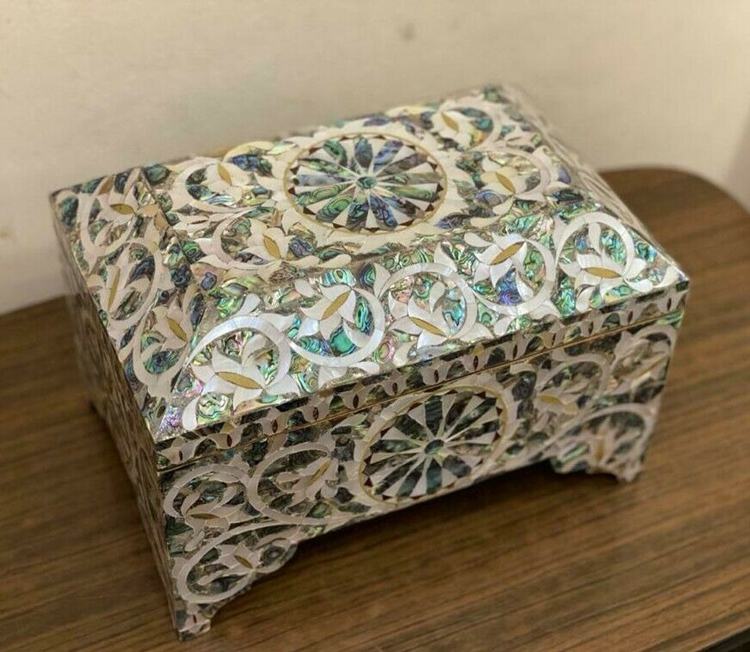
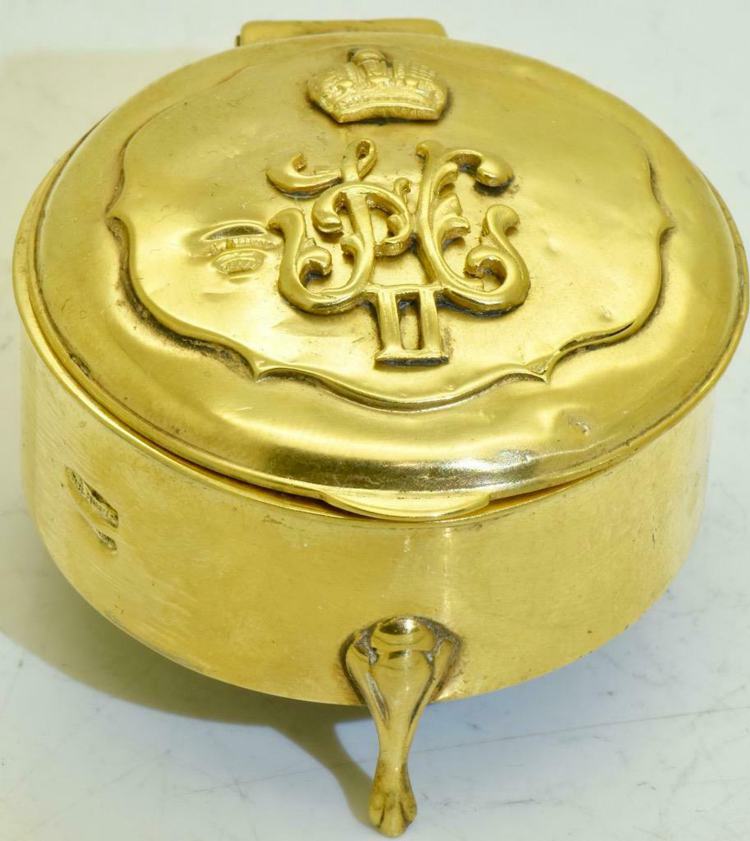
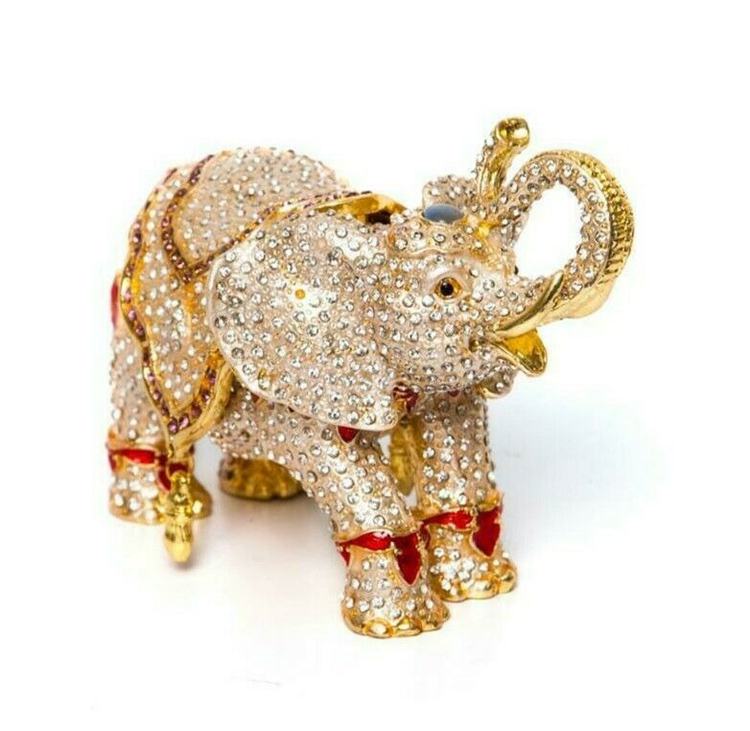
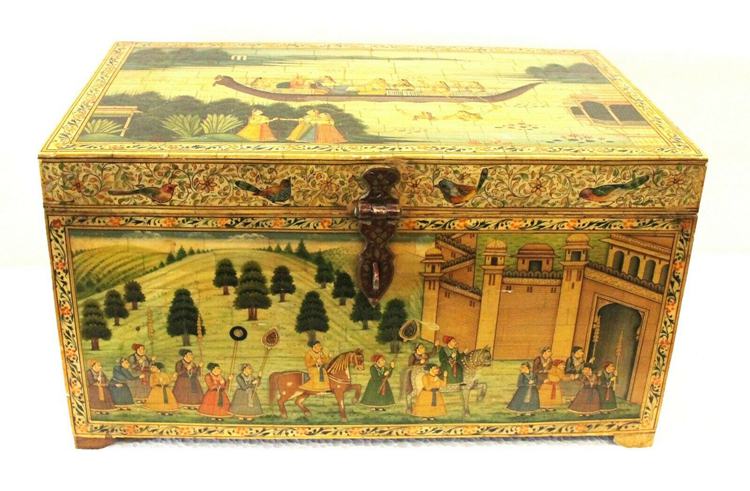
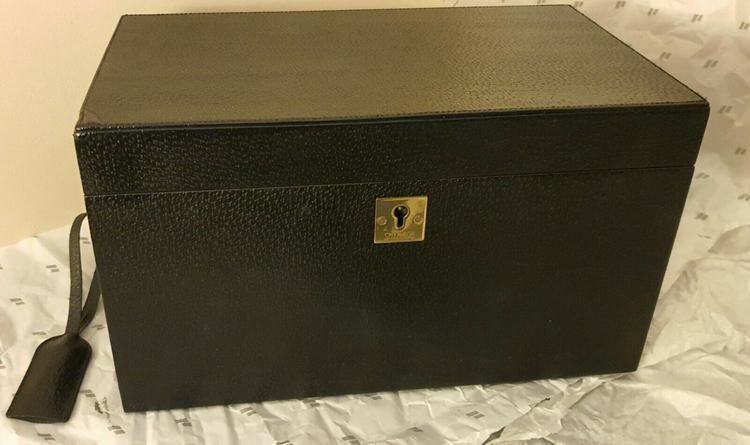
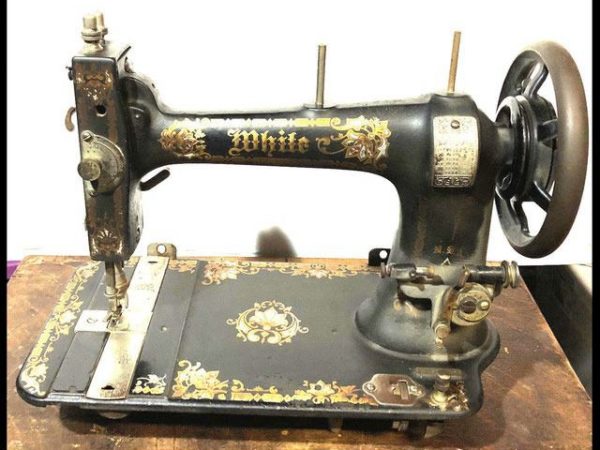
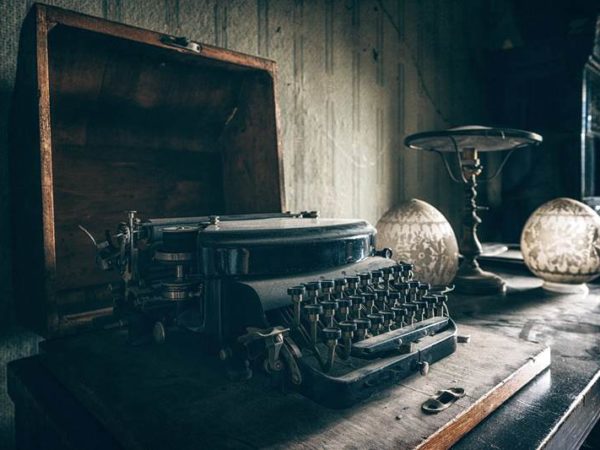
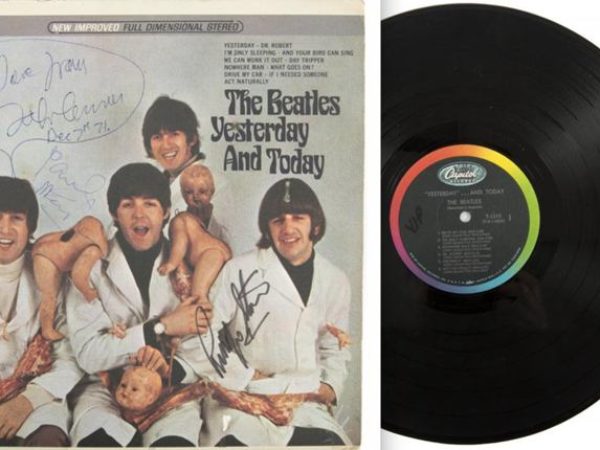
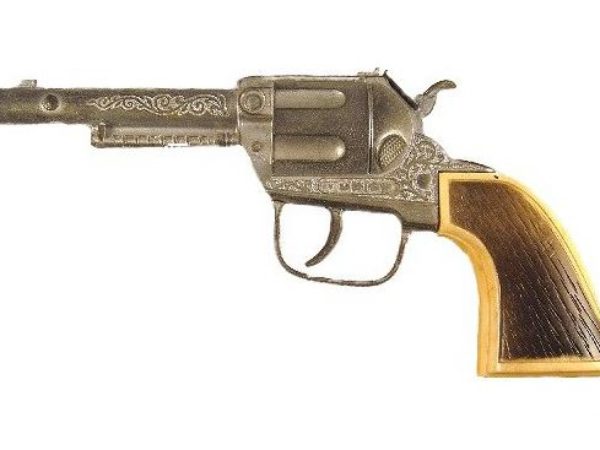
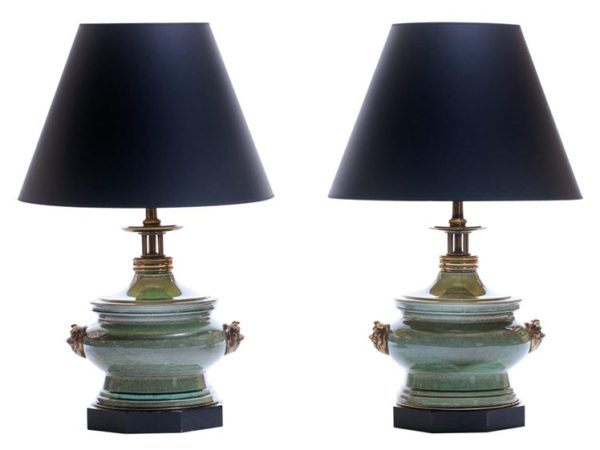
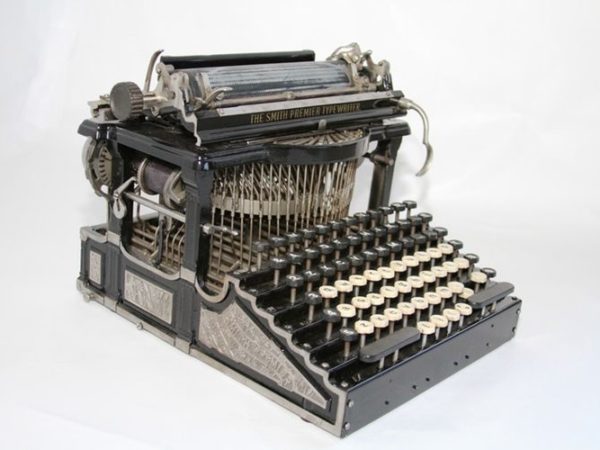
![Vintage Schwinn Bikes: [Types, Identification, and Values]](https://www.txantiquemall.com/wp-content/uploads/2022/05/5.-Schwinn-1967-Ramshorn-Fastback-Stingray-Sky-Blue-vtg-600x450.jpg)
